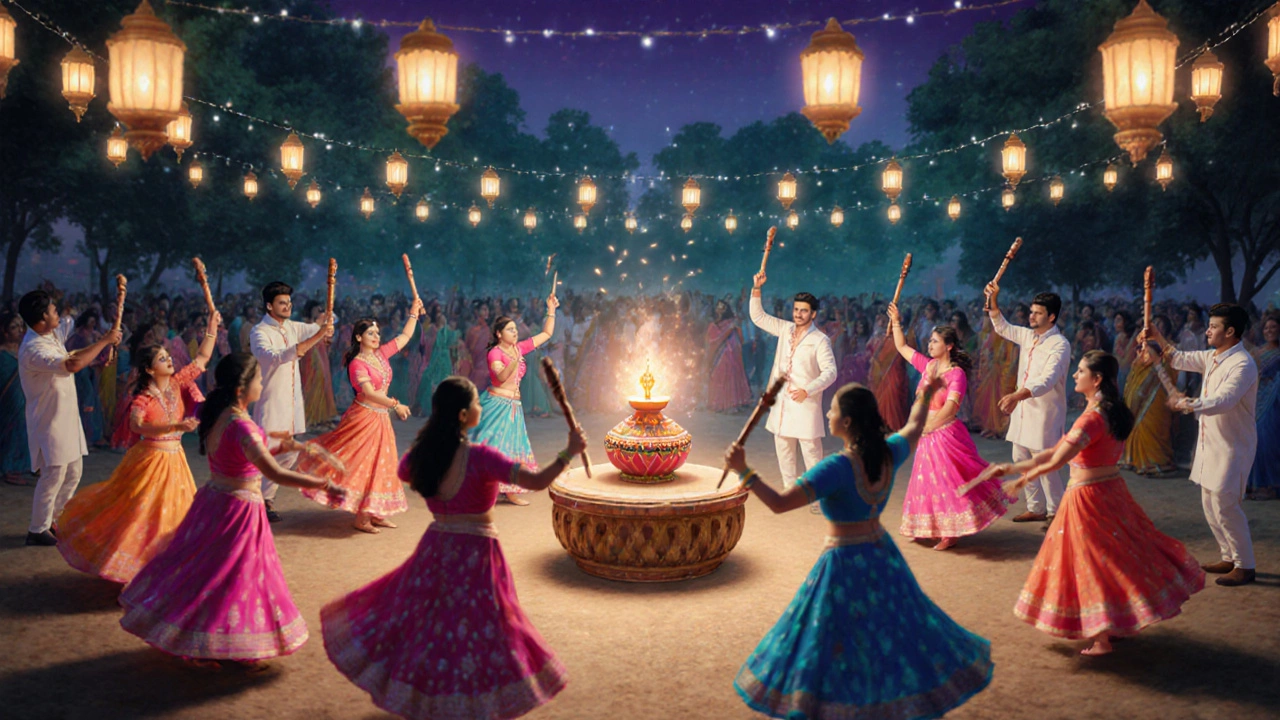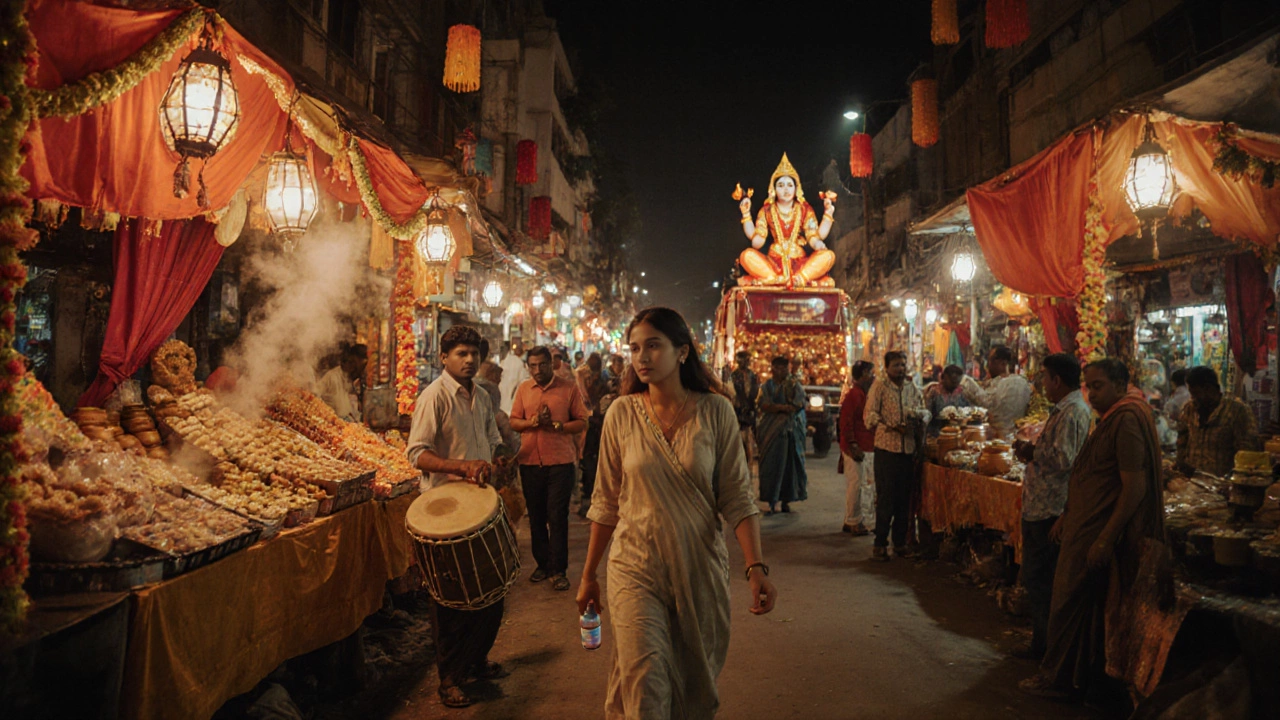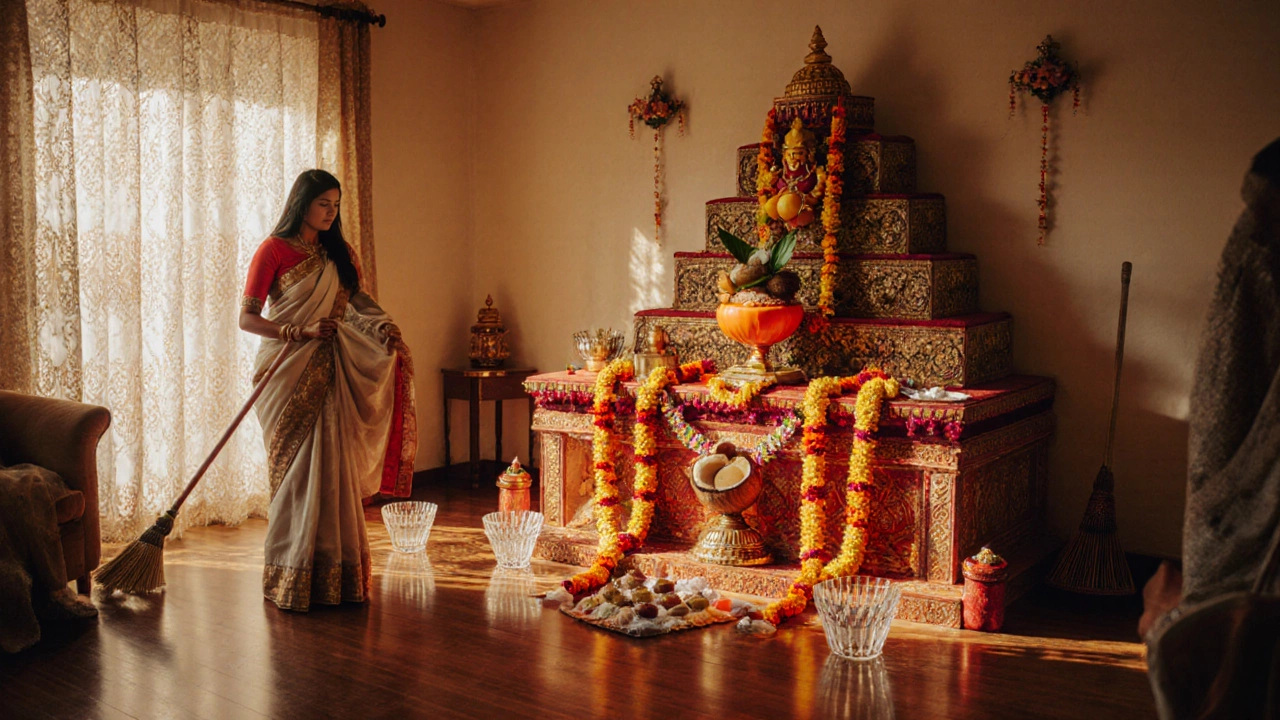When you hear "15‑day Indian festival," the name that pops up most often is Navratri - a period of worship, dance, and community feasting that can stretch up to two weeks in many parts of India.
What Exactly Is Navratri?
Navratri is a Hindu celebration honoring the divine feminine, specifically the goddess Durga (also known as Parvati or Shakti). The word means “nine nights,” but regional customs often add preparatory and concluding days, turning the observance into a 15‑day Indian festival in practice.
How the 15‑Day Duration Emerges
While the core ritual lasts nine nights (and the tenth day, Vijayadashami), many states observe:
- Two days of pre‑Navratri - cleaning homes, setting up altars, and buying new clothes.
- The nine nights of worship (the heart of Navratri).
- Four days of post‑festival activities, including Garba contests, community feasts, and the final Kojagari Lakshmi puja.
Adding these extra days brings the total to roughly fifteen, especially in Gujarat, Maharashtra, and parts of Karnataka.
Regional Flavors of the 15‑Day Celebration
Each Indian state adds its own twist, making Navratri a mosaic of traditions.
| Region | Days Celebrated | Signature Event | Special Foods |
|---|---|---|---|
| Gujarat | 15 | Garba & Dandiya | Fafda, Jalebi |
| Maharashtra (Mumbai) | 15 | Ganesh Chaturthi overlap | Modak, Puri‑Bhaji |
| Karnataka (Mysore) | 15 | Dasara Procession | Holige, Mysore Pak |
| West Bengal | 10 (Durga Puja) | Rangoli & Idol immersion | Luchi‑Alur Dom, Payesh |
| North India | 9+1 (Vijayadashami) | Kojagari Lakshmi Puja | Sabudana Khichdi, Ladoo |

Day‑by‑Day Breakdown of a Typical 15‑Day Navratri
- Day 1‑2 (Pre‑Navratri): Deep cleaning, buying new sarees or kurta sets, setting up a nine‑tiered shakti peeth altar.
- Day 3‑11 (Nine Nights): Each night is dedicated to a different aspect of Durga - from Kalaratri (the fierce form) to Katyayani (the benevolent).
- Day 12 (Vijayadashami): The final day marks the victory of good over evil; families perform Shastra Puja (weapon worship) and burn effigies of Ravana.
- Day 13‑15 (Post‑Navratri): Community Garba marathons, Dandiya competitions, and the celebratory Kojagari Lakshmi puja for prosperity.
Key Rituals You’ll See During the Celebration
Even if you’re a first‑timer, these elements are almost universal across the 15‑day stretch:
- Kalash Sthapana: A pot filled with water, mango leaves, and a coconut is placed at the altar to symbolize the goddess’s presence.
- Fasting: Many devotees observe a fruit‑only fast, while others avoid grains altogether.
- Garba & Dandiya: Circular dances performed around the kalash, symbolizing the universe’s cycles.
- Traditional Music: The beats of the dhol and dhap guide the steps, while devotional songs (bhajans) recount mythic victories.
- Offerings: Kumkum, flowers (marigold, roses), and sweets like ladoos and modaks are presented daily.
Practical Tips for Travelers Wanting to Experience the Full 15 Days
- Book accommodation at least a month in advance - cities like Ahmedabad and Mumbai fill up fast.
- Pack modest clothing; many temples require covered shoulders and knees.
- Bring cash for street‑food stalls; electronic payments aren’t universal in smaller towns.
- Learn a few basic phrases: “Shubh Navratri” (Happy Navratri) and “Aap kaise hain?” (How are you?).
- Respect the fasting rules - avoid eating in front of worshippers during the nine nights.

Common Misconceptions About the 15‑Day Length
People often think Navratri is always nine days. In reality, the festival’s length is fluid:
- Myth: All of India celebrates exactly nine nights.
- Fact: Regions that blend Navratri with Dasara or local harvest festivals naturally extend the celebration to fifteen days.
- Myth: Only women participate.
- Fact: Men join the Garba circles, and children often lead the Dandiya sticks.
Quick Checklist: Are You Ready for a 15‑Day Navratri Experience?
- ✅ Know the dates - usually September/October (based on the lunar calendar).
- ✅ Pack a mix of warm clothing (evenings can be cool) and breathable fabrics for daytime.
- ✅ Bring a reusable water bottle - many venues provide filtered water.
- ✅ Prepare a small offering (e.g., a handful of marigold petals) if you plan to visit a temple.
- ✅ Set aside extra time for post‑Navratri events; they’re often the most lively.
Mini FAQ - Your Navratri Questions Answered
Why do some regions call Navratri a 15‑day festival?
In Gujarat, Maharashtra, and parts of Karnataka, two preparatory days and four post‑festival days are traditionally added to the nine nights. This extends the celebration to roughly fifteen days, allowing more community events and market fairs.
When does Navratri 2025 fall?
In 2025, the main nine‑night period starts on October 4 and ends on October 12. Including the extra pre‑ and post‑days, the 15‑day stretch runs from October 2 to October 16.
Do I need to fast during Navratri?
Fasting is personal. Many observe a fruit‑only diet, but others simply avoid meat or alcohol. The key is respect - if you’re invited to a family’s puja, follow their guidelines.
What should I wear to a Garba dance?
Traditional wear adds to the vibe: women often choose chaniya choli (bright skirts and blouses) and men wear kediyu (short jackets) with dhotis. Comfortable shoes are a must - you’ll be on your feet for hours.
Can tourists join the Dandiya circles?
Absolutely! Most communities welcome outsiders. Just follow the lead, keep the sticks moving in sync, and enjoy the rhythm.
So, the short answer to the title’s question? The festival you’re looking for is Navratri, which many parts of India celebrate over a vibrant, community‑filled 15‑day period.
